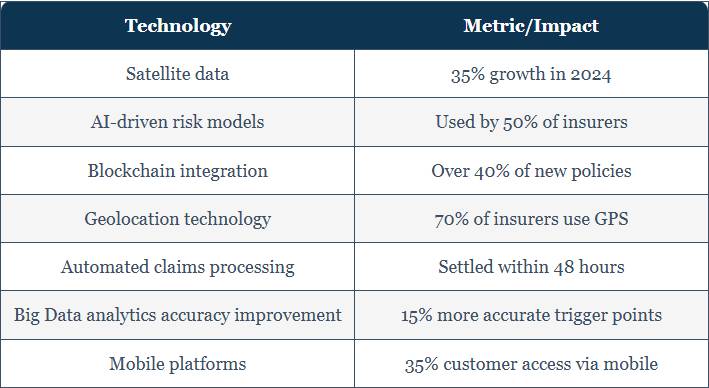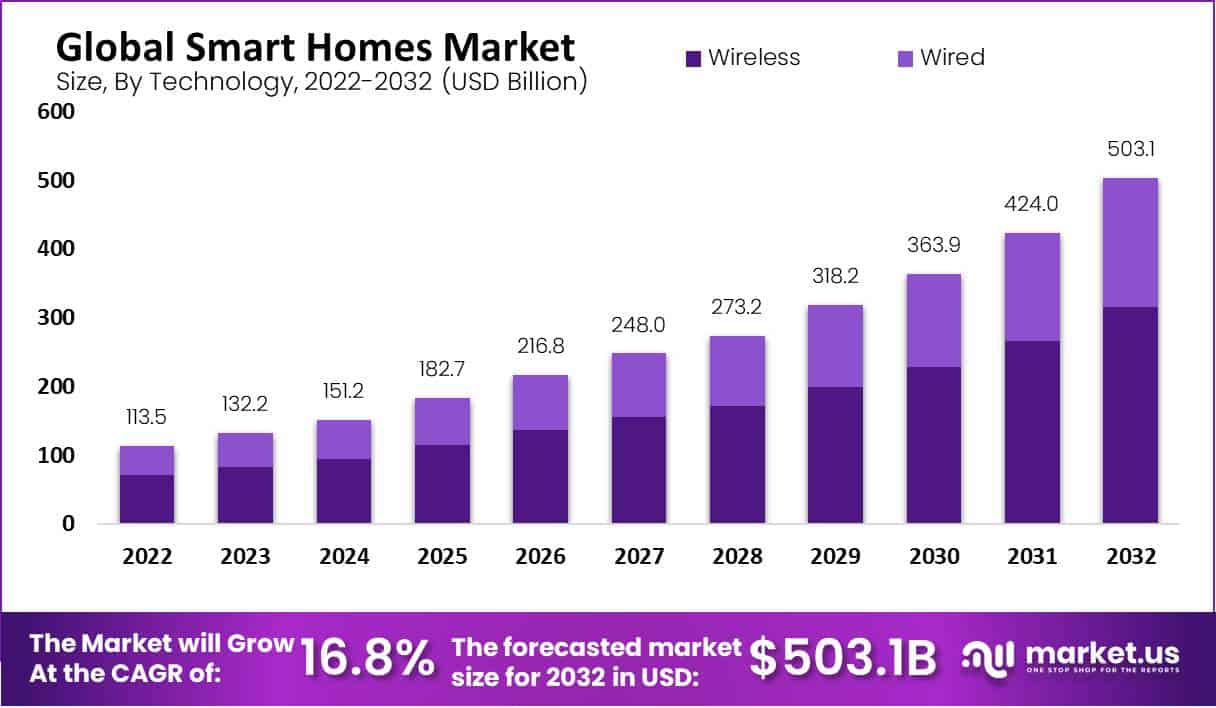WHAT WE HAVE ON THIS PAGE
Introduction
Parametric insurance is a unique type of coverage that provides policyholders with pre-specified payouts based on the occurrence of a specific, measurable event rather than the actual loss incurred. This type of insurance relies on objective parameters or indices such as wind speed, earthquake magnitude, or rainfall levels. If these predefined conditions are met or exceeded, the policy triggers a payout, which is predetermined and does not require the traditional claims assessment process. This model streamlines the payment process, providing a swift financial response to policyholders post-event.
According to Market.us, The global parametric insurance market is on a strong growth path, projected to reach USD 40.6 billion by 2033, up from USD 15.8 billion in 2023. This reflects a steady CAGR of 9.9% from 2024 to 2033, driven by increasing climate risks, natural disasters, and the demand for faster claim settlements. Unlike traditional insurance, parametric insurance offers pre-agreed payouts based on specific triggers like earthquake magnitude or rainfall levels, making it highly attractive for businesses, governments, and farmers seeking quick financial relief.
In 2023, North America led the market, accounting for over 35% of global revenue (about USD 5.5 billion). This dominance is fueled by strong regulatory support, rising adoption of climate risk solutions, and the presence of key players investing in advanced risk modeling. As extreme weather events become more frequent, sectors such as agriculture, energy, and infrastructure are increasingly relying on parametric policies to mitigate financial losses.

The parametric insurance market has seen growth due to its ability to fill gaps in traditional insurance coverages, especially in regions prone to specific types of natural disasters or climatic events. This market is particularly appealing for risks that are challenging to insure under conventional models. Parametric solutions are increasingly relevant in today’s climate, with their use expanding from natural disasters to other areas like agriculture, energy, and entertainment, reflecting their versatility and broad application spectrum.
Several key factors are driving the adoption of parametric insurance. The clear, objective criteria for claims payout reduce the ambiguity and disputes common in traditional insurance settings. This transparency, along with faster payout processes, offers significant advantages, particularly in situations where quick access to funds is crucial for recovery. Moreover, the growing availability and precision of data have enhanced the appeal of parametric products, making them more accurate and reliable.
Key Takeaways
- The parametric insurance market was valued at USD 15.8 billion in 2023 and is projected to grow significantly, reaching USD 40.6 billion by 2033, at a CAGR of 9.9%.
- One of the key drivers of this growth is the rising demand for Natural Catastrophe Insurance, which accounted for 48% of the market in 2023. Increasing climate-related risks, such as hurricanes, wildfires, and floods, have made businesses and governments more reliant on structured financial protection.
- The Agriculture sector led the market in terms of application, contributing 27% in 2023. Given that farming and food production are heavily dependent on weather conditions, parametric insurance plays a critical role in managing unpredictable climate risks.
- When it comes to distribution, Direct Sales was the dominant channel, holding 40% of the market in 2023. Businesses and individuals are opting for direct purchasing methods to secure customized policies that match their specific needs.
- North America emerged as the largest regional market, accounting for 35% of the total share in 2023. The demand for innovative risk management solutions in sectors like agriculture, energy, and infrastructure continues to drive market expansion in the region.
Impact of AI on Market Trends
Artificial intelligence (AI) significantly impacts parametric insurance by enhancing data processing capabilities and predictive analytics. AI applications in this field help in refining risk assessments, pricing policies more accurately, and even predicting the probability of parameter triggers. This not only improves the product offerings but also increases the efficiency of underwriting and claims processes, potentially leading to broader market acceptance and growth.
You May Also Like To Read
Analysts’ Viewpoint
One of the primary objectives of parametric insurance is to expedite financial recovery following disasters by avoiding the delays of traditional claims processing. By offering quick payouts, these policies help insured parties manage liquidity efficiently after a loss event. They are also designed to complement existing insurance coverages, providing an additional layer of security where traditional policies might not fully align with the insured’s needs or where gaps in coverage exist.
Demand for parametric insurance is on the rise, particularly in sectors and regions where high-impact, low-frequency events can create significant economic disruptions. Businesses, governments, and even individuals in areas with high exposure to specific perils are increasingly considering parametric insurance as a viable risk transfer option. The simplicity and certainty of the product make it an attractive choice for those looking for straightforward, transparent insurance solutions.
As awareness and acceptance of parametric insurance grow, investment opportunities in this sector are expanding. Investors and companies see potential in the scalability of parametric models, especially as technological advancements continue to improve the accuracy of event data and parameter tracking. These advancements open new markets and possibilities for tailored parametric insurance products, making it a promising area for financial innovation and investment.
Technology plays a pivotal role in the evolution and effectiveness of parametric insurance. Improved data analytics, better sensor technologies, and more sophisticated modeling techniques allow for more precise and timely monitoring of parameters. These technologies enhance the accuracy of payouts and expand the range of perils that can be covered effectively under parametric policies.
Parametric Insurance Statistics
- The natural catastrophe insurance segment remains the dominant force in the parametric insurance market, holding over 56% of the total share. This surge is largely driven by the increasing frequency and severity of climate-related disasters.
- One of the most costly natural catastrophes in recent years was Hurricane Ian in 2022, which resulted in $95.5 billion in total economic losses, with nearly half of the damages left uncovered. The global protection gap in disaster insurance was a staggering 58%, highlighting the pressing need for better coverage.
- Europe also faced extreme climate events, with the summer of 2022 marking the worst drought in 500 years. Major rivers, particularly the Rhine, saw barge loading capacity drop by 75% in August, disrupting trade and supply chains. The year before, catastrophic floods devastated Germany, with damages exceeding €30 billion.
- Despite these rising risks, many insurers are retreating from high-risk markets, either withdrawing from challenging geographies or excluding climate-related triggers. As a result, only 42% of disaster losses were covered by insurance in the past year.
- The agriculture sector continues to be a major adopter of parametric insurance, holding over 27% of the market share. Farmers and agribusinesses increasingly rely on these solutions to manage unpredictable weather risks.
- Key industry players include AXA and Munich Re, which collectively hold over 20% of the market. Meanwhile, the construction industry is experiencing strong adoption, accounting for nearly one-third of the market and projected to grow at a CAGR of 10.4%, the highest rate among all segments.
- Europe has seen a steady rise in parametric insurance adoption, with Germany leading at a 15% market share within the region. Public sector involvement is also growing, with governments and NGOs making up 12% of policy purchases, primarily for disaster relief and climate adaptation efforts.
- Insurtech companies are reshaping the market, capturing 20% of the share through digital distribution and automated claims processing. This innovation is making parametric insurance more accessible and efficient.
- In Asia-Pacific, Japan and China dominate with a combined 70% share of the regional market. Both countries are at the forefront of developing parametric solutions for typhoons and other natural disasters, driving further expansion in the sector.
Power of Technology in Parametric Insurance
Artificial Intelligence (AI) is revolutionizing risk assessment in parametric insurance, with 50% of insurers now leveraging AI-driven analytics to fine-tune policy triggers. By analyzing vast amounts of real-time data, AI enhances the accuracy of payouts, ensuring faster and more efficient claims processing.
Blockchain technology is also making a significant impact, with over 40% of new parametric policies incorporating blockchain for secure data storage and transparent claims settlement. By providing an immutable ledger of transactions, blockchain minimizes disputes and enhances trust between insurers and policyholders.
Geolocation technology plays a crucial role in parametric insurance, with 70% of insurers utilizing GPS data to monitor risk factors in real time. This technology enables precise tracking of weather patterns, seismic activity, and other critical variables, improving policy accuracy and response times.

Source: coinlaw.io
Report Segmentation
Type Analysis: Natural Catastrophes Insurance
In 2023, the segment of Parametric Insurance dedicated to Natural Catastrophes held a significant portion of the market. Capturing over 48% of the market share, this segment reflects the increasing reliance on parametric solutions for managing risks associated with natural disasters. The high percentage indicates a strong demand driven by the clear and immediate benefits these policies provide, such as rapid payout and straightforward claims processing, essential for recovery in catastrophe-prone areas.
Application Analysis: Agriculture
The Agriculture sector also showed a strong preference for parametric insurance in 2023, securing more than 27% of the market share. This dominant position underscores the sector’s vulnerability to weather-related events and the critical need for quick financial responses that parametric insurance offers. Farmers and agribusinesses are increasingly turning to these insurance products to safeguard against unpredictable climatic changes that can severely impact crop yields and livestock.
Distribution Channel Analysis
Direct Sales Direct Sales channels were particularly effective in the parametric insurance market in 2023, accounting for more than 40% of the market. This method’s success can be attributed to the direct engagement between insurance providers and clients, facilitating clearer communication of the benefits and terms of parametric insurance. This approach helps in demystifying the nuances of parametric coverage for potential policyholders, leading to higher adoption rates.

Emerging Trends
- Increased Customization and Flexibility: There’s a notable shift towards offering more tailored parametric insurance solutions that can specifically align with the unique risks of individual clients, including those from sectors like agriculture and renewable energy.
- Integration of Advanced Technologies: The use of IoT and AI is becoming increasingly common in parametric insurance, enhancing the accuracy of data collection and risk assessment, thus improving the reliability of triggers for claims.
- Expansion into New Markets: Parametric insurance is broadening its reach, moving beyond natural disasters to cover other complex risks like cyber threats and market volatilities, making it a more versatile tool in risk management.
- Focus on Climate Resilience: As climate change escalates the frequency and severity of weather-related events, parametric insurance is being viewed as a critical component in climate adaptation strategies, helping to manage the financial impacts efficiently.
- Growth in Market Acceptance: The market is increasingly recognizing the value of parametric insurance as a viable alternative to traditional coverage, appreciated for its clarity and speed in payouts, which is driving its adoption across various sectors.
Top Use Cases
- Natural Disaster Quick Response: Provides immediate financial relief post-disaster, like earthquakes or hurricanes, with payouts triggered by measurable events such as seismic activity or wind speeds.
- Agricultural Sector Protection: Offers financial protection against weather variability impacting crop yields, with payouts linked to predefined weather indices like rainfall or temperature levels.
- Renewable Energy Sector Stability: Shields investments from environmental risks that could interrupt operations, such as wind or precipitation levels, ensuring operational continuity and reducing downtime.
- Public Sector Resilience: Enables governments to quickly allocate funds following disasters to boost public resilience against economic shocks.
- Tourism and Hospitality Industry Safeguard: Provides a financial safety net for industries sensitive to climate impacts, maintaining business continuity despite adverse weather conditions that might deter tourism.
Attractive Opportunities
- Addressing the Protection Gap: With a significant portion of economic losses from natural disasters remaining uninsured, parametric insurance presents an opportunity to close this gap, offering coverage that can be quickly mobilized to mitigate financial impact.
- Enhancing Financial Resilience: Governments and organizations are increasingly recognizing the role of parametric insurance in enhancing economic stability and resilience against natural and man-made disasters.
- Supporting Sustainable Development: By providing swift payouts, parametric insurance supports immediate recovery and sustainable development practices, particularly in vulnerable communities affected by climate change.
- Driving Technological Integration: The continued advancement and integration of technology in parametric insurance are creating more precise and efficient coverage options, enhancing the overall value of insurance products.
- Expanding Global Reach: The global nature of parametric insurance, supported by harmonizing international regulatory frameworks, allows for wider adoption and effectiveness across different regions and markets.
Key Market Segments
By Type
- Natural Catastrophes Insurance
- Specialty Insurance
- Others
By Application
- Agriculture
- Energy & Utilities
- Real Estate
- Construction
- Healthcare
- Marine
- Travel & Tourism
- Others
By Distribution Channel
- Direct Sales
- Brokers
- Online Platforms
Top Key Players in the Market
- Allianz Group
- AXA SA
- Zurich Insurance Group Ltd.
- Berkshire Hathaway Inc.
- Chubb Limited
- Munich Re Group
- FloodFlash Limited
- Neptune Flood Incorporated
- Global Parametrics Limited
- Swiss Re
- Other Key Players
Sources:
- https://descartesunderwriting.com/insights/parametric-insurance-trends-an-alternative-insurance
- https://coinlaw.io/parametric-insurance-industry-statistics/
- https://market.us/report/parametric-insurance-market/
- https://scoop.market.us/parametric-insurance-market-news/
- https://www.amwins.com/resources-insights/article/parametric-insurance-offering-more-protection-in-a-challenged-market
- https://insuranceasia.com/insurance/news/parametric-insurance-market-grow-12-2032
- https://www.linkedin.com/pulse/perimeter-security-market-reach-usd-1698-billion-2033-markets-us-hx0uc
- https://medium.com/@pramod_50244/top-10-perimeter-security-trends-mapping-the-future-of-protection-534cafae1aae
ABOUT AUTHOR
Yogesh Shinde is a passionate writer, researcher, and content creator with a keen interest in technology, innovation and industry research. With a background in computer engineering and years of experience in the tech industry. He is committed to delivering accurate and well-researched articles that resonate with readers and provide valuable insights. When not writing, I enjoy reading and can often be found exploring new teaching methods and strategies.









